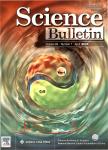The universality and biological significance of signal molecules with intracellular-extracellular compatible functions
The universality and biological significance of signal molecules with intracellular-extracellular compatible functions作者机构:Institute of Molecular Cell Biology Hebei Normal University Shijiazhuang China
出 版 物:《Chinese Science Bulletin》 (CHINESE SCIENCE BULLETIN)
年 卷 期:2000年第45卷第19期
页 面:1729-1734页
核心收录:
学科分类:0710[理学-生物学] 07[理学] 071009[理学-细胞生物学] 09[农学] 0901[农学-作物学] 090102[农学-作物遗传育种]
基 金:G1999011700 National Natural Science Foundation of China,NSFC: 39730230 Natural Science Foundation of Hebei Province: 393054
主 题:intracellular signal extracellular signal compatible messenger.
摘 要:Generally, cell signal molecules are classified into the extracellular signal molecules (the first messengers) and the intracellular signal ones (the second messengers). Cyclic adenosine monophosphate (cAMP), calcium ions and calmodulin (CaM) are the traditional intracellular messengers, but they are also present in extracellular matrix (ECM). Some of them have been discovered to act as the first messengers through cell surface receptors. Other second messengers, such as cyclic guanosine monophosphate (cGMP), cyclic adenosine diphosphate ribose (cADPR) and annexin, are also found existing outside animal and plant cells. The existence of these messengers with intracellular-extracellular compatible functions in cells may be a regular biological phenomenon. These compatible messengers might be the communication factors between intracellular and extracellular regions or among the cell populations, and are also important in regulating cell development procedure.



